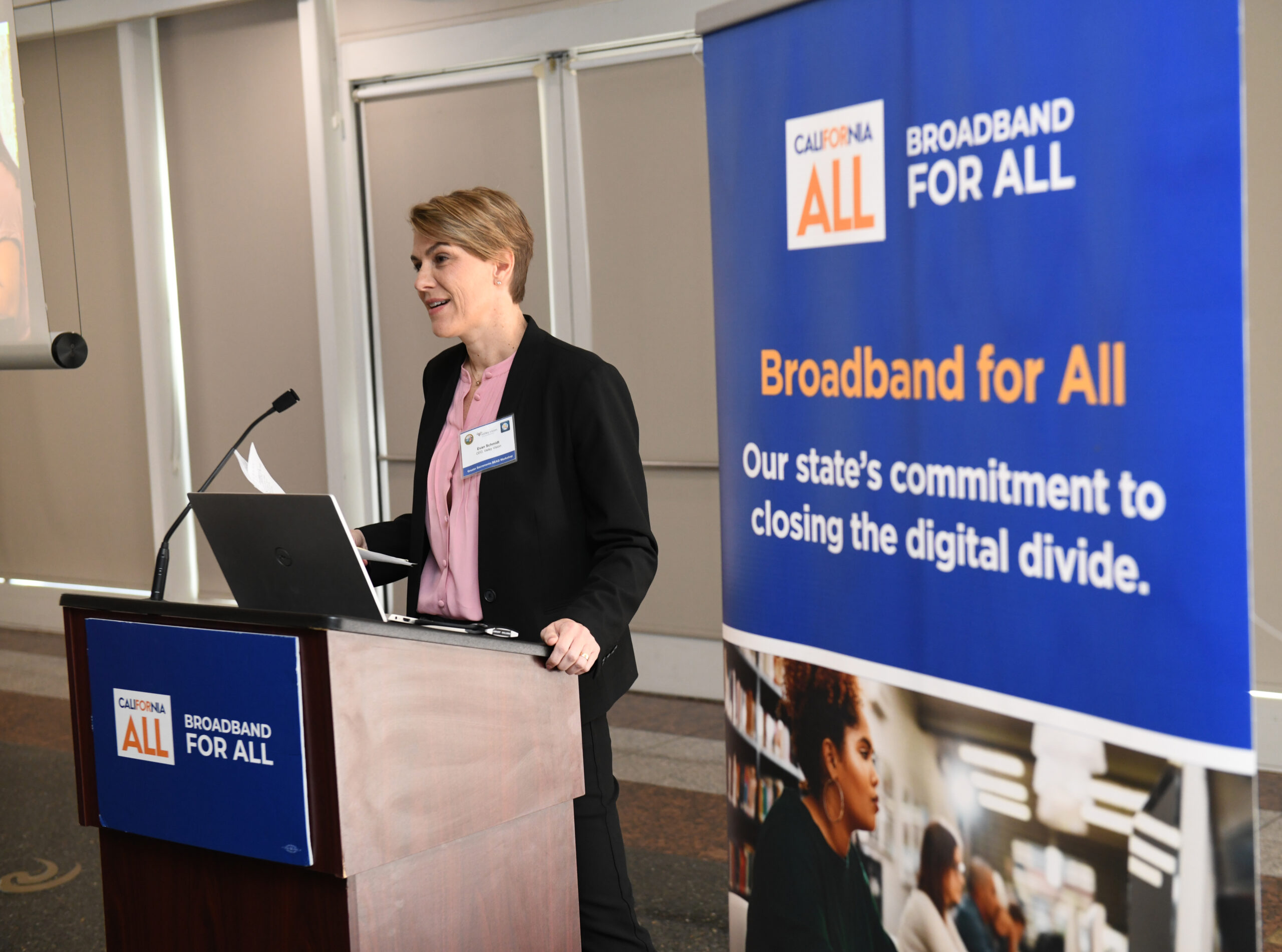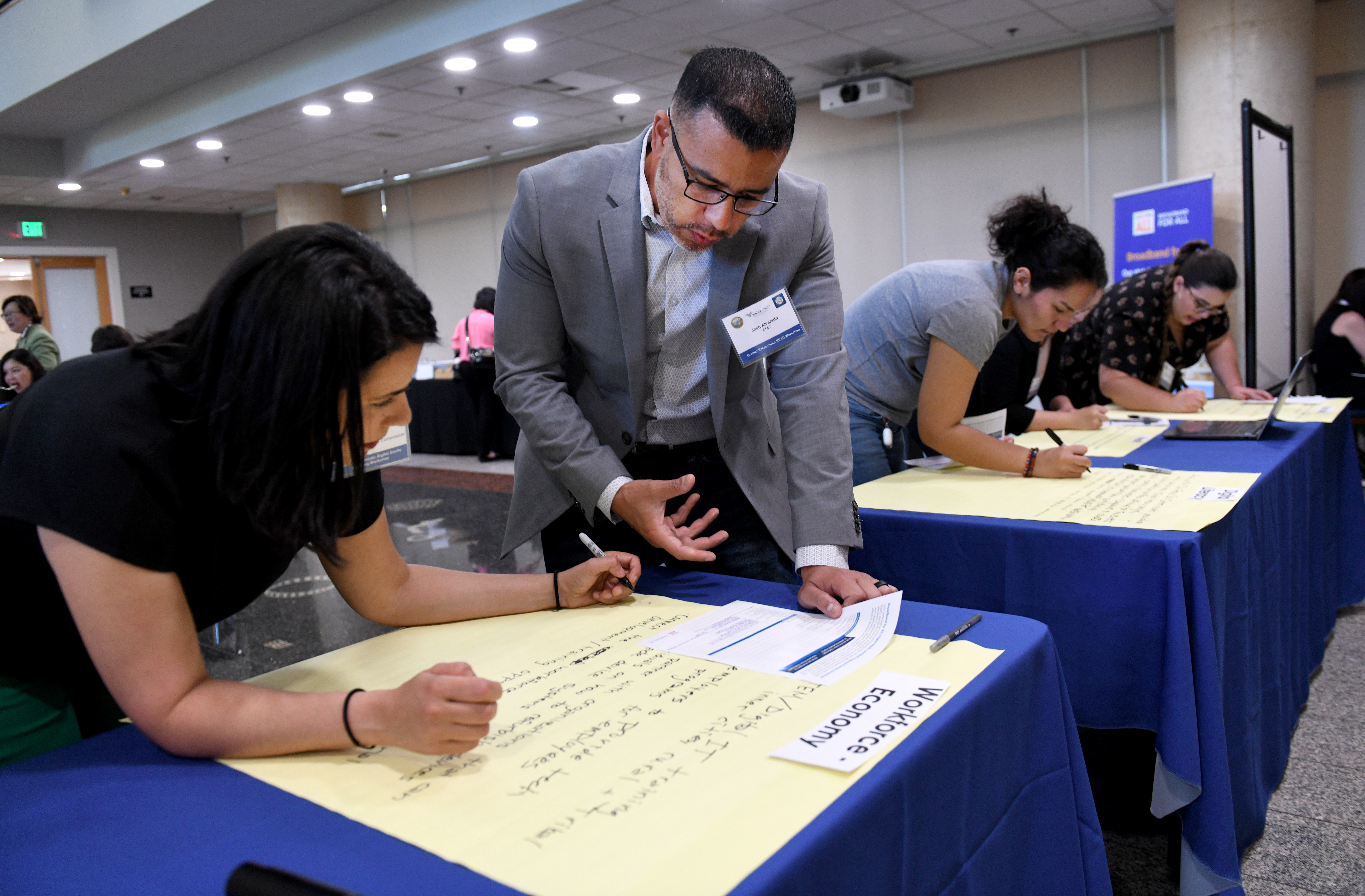Envisioning ‘Broadband For All’ in the Greater Sacramento Region

On May 11th Valley Vision, as manager of the Connected Capital Area Broadband Consortium, hosted California’s Broadband for All Digital Equity and Broadband Equity, Access, and Deployment (BEAD) Planning Workshop for the Greater Sacramento Region. This event was held in collaboration with the California Public Utilities Commission (CPUC), California Department of Technology (CDT) and the California Emerging Technology Fund (CETF), as one of 17 regional workshops being convened across the state. The event provided an opportunity for more than 160 participants to contribute vital input on regional needs and priorities for the state’s ‘Broadband For All’ action plan. The recommendations will help shape California’s Digital Equity Plan being submitted to the National Telecommunication and Information Administration (NTIA). As part of a national process, NTIA will then determine the allocation of BEAD funding for each state.
Local leaders and broadband champions, including Sacramento Mayor Darrell Steinberg, Sacramento Councilmember Katie Valenzuela, and Valley Vision CEO Evan Schmidt highlighted the unique needs and assets of our region, along with their commitment to bridging the digital divide in collaboration with community stakeholders and state and federal partners.
“Digital equity is a civil rights issue,” Steinberg told participants. “It involves unincorporated areas. It involves rural areas. But it is also an urban issue. This is really serious and important work.”
State and federal leaders from the CPUC, CDT, California’s Department of Education, Governor’s Office of Business and Economic Development (GO-Biz), and NTIA detailed the progress of the State’s ongoing planning and deployment efforts. These include the development of the State’s Middle-Mile open access network, new Last Mile infrastructure funding sources, resources such as California Local Jurisdiction Permitting Playbook, and progress from Broadband for All Roundtables. CPUC Commissioner Darcie Houck noted that funding from numerous new sources will make a major difference in closing the digital divide, although even more will be needed eventually.
Amplifying Community Voices
Following remarks and overview, the Workshop provided a space for several community members to voice their experiences with digital access. As each Lived Experience Speaker took the stage, their unique history and stories were pivotal in sparking discussions across attendees. Lived Experience Speakers not only represented the region, but also federally-designated covered populations which have been historically underrepresented in digital inclusion and broadband implementation. Hearing the experiences and insights of community members underscored the importance of bridging the Digital Divide, and led the way to the Workshop’s segment on developing and leading calls to action.


Led by CETF, the collaboration session gathered input from participants to create actionable recommended strategies across various areas – including each covered population group and outcome area. The eight covered populations groups, which have been disproportionately affected by digital redlining are, Individuals living in covered households, Aging Individuals, Incarcerated Individuals, Veterans, Individuals with Disabilities, Individuals with language barriers, Members of a racial or ethnic minority group, and Individuals who primarily reside in a rural area. The six outcome area working groups, which are high priorities areas for digital equity are, Education, Health, Digital Literacy and Inclusion, Essential Services, Accessibility and Civic Engagement, Workforce and Economic Development, and Tribal Collaboration.
Participants’ recommended strategies include to “incorporate digital literacy education and information about affordable offers into existing programs, including Veterans Administration healthcare facilities” and “propose increased funding to support a program to provide language support and translation services during appointments.”
The Greater Sacramento Workshop featured both high registration and attendance numbers, with attendance totaling to over 160 participants. The success of the Greater Sacramento Workshop would not have been possible without the support of our regional network and community members, as well as our dedicated state partners. Valley Vision greatly thanks all attendees for their participation at the Workshop, assistance in outreach, and guided input in the planning process.
Continuing Engagement
As efforts continue, Valley Vision is committed to informing and engaging the region on critical broadband infrastructure, access and deployment. We invite organizations and community members involved in digital equity to attend the Capital Region Coalition for Digital Inclusion (CRCDI)’s upcoming meeting on Friday, June 23rd from 11am – 12:30pm. The meeting will focus on outcomes and findings from our region’s BEAD and Digital Equity Workshop, along with updates on the State’s Digital Equity Plan. Register HERE.
Additionally, we encourage civic organizations, community members, and entities across education, health, economic and workforce sectors to participate in and support outreach for the California Digital Equity Survey. Information collected from the survey will help inform the State’s Digital Equity Plan, and help ensure community access to high quality and affordable internet service, devices, skills training, and digital support. The survey is estimated to be 10-15 minutes, and is available in 14 languages: English, Spanish, Mandarin, Cantonese, Vietnamese, Tagalog, Korean, Armenian, Persian/Farsi, Arabic, Russian, Japanese, Punjabi, and Khmer. Access the California Digital Equity Survey HERE.


